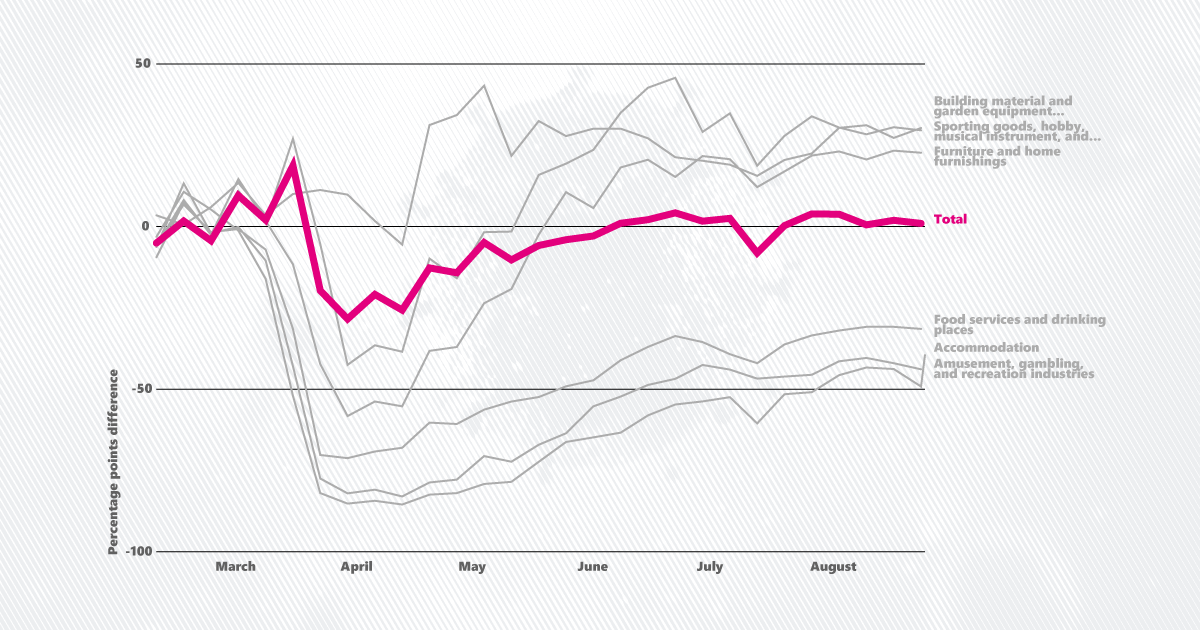Health
5 things August data says about COVID-19 and the economy

In 2020, 11,368 women between ages 20 and 39 were diagnosed with breast cancer in the US, according to the Centers for Disease Control and Prevention (CDC). That’s a rate of 27 per 100,000 people in the age group.
Overall, there were 239,612 new cases of female breast cancer in 2020, down from 270,395 in 2019. However, the CDC cautions that the COVID-19 pandemic disrupted cancer screenings, which may, in part, explain the drop in cases in 2020.
In 2020, the impact of COVID-19 on health services and the consequential delays and reductions in cancer screening and diagnosis led to a decline in the 2020 incidence rates for most cancer sites. Compare 2020 data to prior years with caution. SEER collects cancer incidence data from population-based cancer registries covering approximately 47.9 percent of the U.S. population.
Breast cancer diagnosis rates for all age groups of women have generally decreased over time, data from the National Cancer Institute shows rates have increased for women ages 15–39. Still, the proportion of women under 40 who are diagnosed with breast cancer is relatively low compared to those 40 and older.
For women younger than 40, the rate of new breast cancer diagnoses increases with age. In 2020, the diagnosis rate for women ages 30–34 was nearly triple what it was for women 25–29.
Data from the National Cancer Institute’s Surveillance, Epidemiology, and End Results Program (SEER) shows that breast cancer diagnoses for all ages have increased slightly from 133.2 per 100,000 people in 2000 to 134.4 in 2019. Rates have decreased for the 40–64 and 75 and older age groups since 2000, but they’re up for women ages 15–39 and 65–74. The diagnosis rate for women 15–39 increased 17.2%, from 20.9 in 2000 to 24.5 in 2019.
The SEER data contains incidence or diagnosis data from registries representing about 48% of the US population.
A woman born in 2020 has a 1-in-8 chance of being diagnosed with breast cancer during her lifetime, according to the National Cancer Institute. However, the probability of diagnosis increases with age.
In 2020, the incidence rate for women ages 15–39 was about 23 cases per 100,000 women. The rate for women ages of 40–65 was about 210 cases, and for women 65–74, it was nearly 407 cases.
All women are at risk for getting breast cancer, but factors such as a family history of breast cancer, exposure to radiation therapy as a child or young adult, Ashkenazi Jewish heritage, and changes to breast cancer genes such as BRCA 1 or 2 can increase the probability of diagnosis for women under the age of 45.
High breast density and a history of breast health issues can also increase the probability of breast cancer diagnoses. Excess body weight among postmenopausal women, physical inactivity, alcohol use, and hormone replacement therapy are controllable factors also linked to breast cancer risk.
Breast cancer rates increased between 1975 and 2020, the period for which SEER has cancer diagnosis data. Women born in the 1970s had less than a 10% lifetime risk of getting diagnosed with breast cancer compared with nearly 13% in 2020, according to the NCI.
However, recent trends show that breast cancer diagnoses are down. In 1999, the recent peak in diagnoses, there were about 142 breast cancer cases per 100,000 women. In 2019, there were about 137 cases. The diagnosis rate declined further in 2020 to about 125, but that could be due to screening interruptions during the pandemic.
Since 2000, diagnoses for women in the 15–39 and 65–74 age groups have increased, while diagnoses for women 40–64 and 75 and older have decreased.
Learn more about cancer rates and trends in the US, and get the data directly in your inbox by signing up for our email newsletter.